As the culinary landscape continues to evolve, so does the technology that powers our kitchens. One such innovation that has taken the home cooking world by storm is the air fryer. With its promise of crispy, healthy fried foods without the guilt, these appliances have become a staple in many homes. In the realm of air fryer manufacturing, the term “turnkey” and “UL certification” are becoming increasingly significant. They represent not just the quality and safety of the product, but also the streamlined process that brings these appliances to market. Let’s delve into what these terms mean and why they are shaping the future of air fryer manufacturing.
Introduction to Turnkey Solutions and UL Certification
Turnkey solutions have become a cornerstone in the world of manufacturing, offering a streamlined approach to product development and production. These comprehensive packages provide clients with everything they need to bring a product to market, from design and engineering to final assembly and certification. At the heart of many turnkey offerings is the assurance of compliance with stringent safety and quality standards, which is where UL certification comes into play.
The concept of a turnkey solution is simple yet powerful. It’s about taking the complexity out of product development and allowing businesses to focus on what they do best—innovating and growing. When you choose a turnkey solution, you’re essentially outsourcing the entire manufacturing process to experts who have the experience, resources, and know-how to deliver a finished product that meets your exact specifications.
UL certification, on the other hand, is a mark of excellence that signifies a product’s adherence to safety standards. Underwritten by Underwriters Laboratories, a global independent safety science company, UL certification is recognized and respected worldwide. It’s a badge of honor that can give your product a competitive edge in the marketplace, reassuring consumers that they are purchasing a safe and reliable product.
In the realm of kitchen appliances, the air fryer has emerged as a popular choice for health-conscious consumers seeking a healthier alternative to traditional deep-frying. Air fryers use hot air to circulate around food, reducing the amount of oil needed and, in turn, lowering the calorie count. This technology has not only captured the attention of consumers but has also piqued the interest of manufacturers looking to enter this burgeoning market.
When it comes to producing air fryers, turnkey solutions offer a unique advantage. They provide a complete package that includes not just the manufacturing process but also the necessary certifications. This means that manufacturers can focus on what they do best—designing and marketing innovative products—while leaving the technical details to the experts.
The turnkey approach to air fryer production often includes the following elements:
-
Design and Engineering: Experts in the field work with clients to design air fryers that are not only efficient and effective but also aesthetically pleasing and user-friendly.
-
Material Sourcing: Turnkey providers handle the sourcing of high-quality materials that meet the stringent requirements of UL certification.
-
Manufacturing: The actual assembly of the air fryers is done in state-of-the-art facilities, using precision equipment and skilled labor.
-
Quality Control: Throughout the manufacturing process, rigorous quality control measures are in place to ensure that each air fryer meets the highest standards of performance and safety.
-
Certification: Once the manufacturing process is complete, the air fryers undergo the necessary testing and inspections to obtain UL certification.
-
Packaging and Shipping: The final step in the turnkey process is the packaging and shipping of the air fryers to the client’s desired location.
One of the most significant benefits of opting for a turnkey solution with UL certification is the peace of mind it brings. Manufacturers can be confident that their products are not only safe for consumers but also compliant with global safety standards. This can be particularly reassuring for companies looking to expand into new markets or appeal to a broader customer base.
Moreover, turnkey solutions can significantly reduce the time and resources required to bring a new product to market. By leveraging the expertise of a turnkey provider, manufacturers can bypass the challenges of setting up their own manufacturing facilities and navigating the complexities of certification processes.
In conclusion, turnkey solutions combined with UL certification are a powerful combination for manufacturers looking to enter the air fryer market or any other industry where safety and quality are paramount. These solutions offer a seamless path from concept to consumer, ensuring that the final product is not only innovative but also meets the highest standards of safety and reliability.
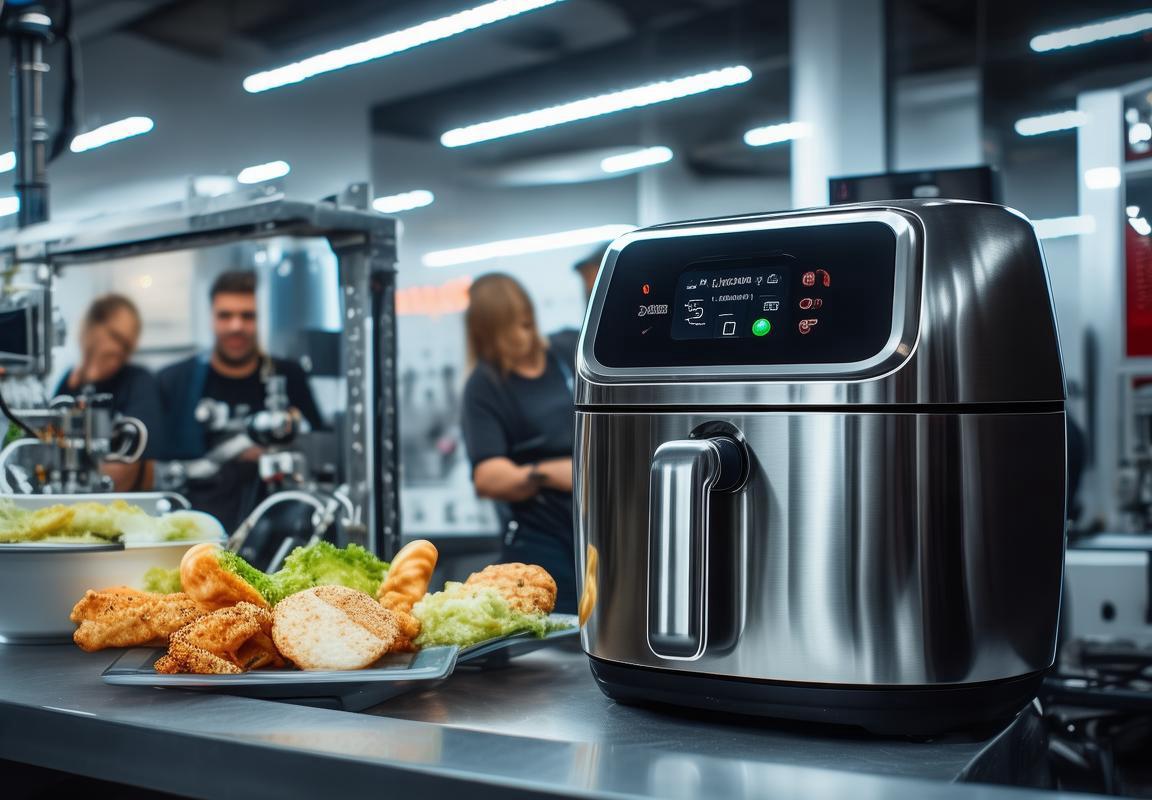
The Rising Popularity of Air Fryers
Air fryers have surged in popularity in recent years, becoming a staple in kitchens around the world. This sudden surge in demand can be attributed to several key factors that have transformed the appliance from a niche gadget to a must-have kitchen tool.
The health-conscious trend has played a significant role in the air fryer’s popularity. With the rise of awareness about the benefits of healthier cooking methods, consumers are seeking alternatives to deep-frying that still offer delicious, crispy results. Air fryers use hot air to circulate around food, reducing the amount of oil needed by up to 80%, which appeals to those looking to cut down on calories and fats.
Additionally, the convenience factor cannot be overlooked. Air fryers are compact and easy to use, requiring minimal cleanup and often less time than traditional cooking methods. This convenience is particularly appealing to busy individuals, families, and anyone who values efficiency in the kitchen.
The versatility of air fryers is another reason for their growing popularity. They can be used to cook a wide variety of foods, from fried chicken and French fries to vegetables and desserts. This flexibility means that air fryers can replace multiple appliances in a kitchen, saving space and reducing the number of gadgets to store and maintain.
Cookbook authors and influencers have also contributed to the air fryer’s rise. With countless recipes and cooking tips available online, many have embraced the air fryer as a way to experiment with new flavors and techniques. From simple home cooks to professional chefs, the air fryer has become a go-to tool for culinary creativity.
Moreover, the environmental benefits of air fryers have caught the attention of eco-conscious consumers. These appliances use less energy than conventional ovens and require less oil, which reduces the environmental impact of cooking. As sustainability becomes a more prominent concern, air fryers are seen as a more sustainable choice for those looking to reduce their carbon footprint.
The price point has also been a major driver in the air fryer’s popularity. Once a premium appliance, air fryers have become increasingly affordable, making them accessible to a broader market. This accessibility has allowed more households to incorporate this kitchen innovation into their cooking routines.
The technology behind air fryers has also evolved, with many models now offering features like programmable settings, digital controls, and even preset cooking modes for a variety of foods. This technological advancement has made the cooking process even more straightforward and enjoyable for users.
In recent years, the air fryer has also gained a reputation for its ability to mimic the taste and texture of fried food without the guilt. This has been particularly attractive to those who love the flavor of fried food but are looking for a healthier alternative.
Furthermore, the social aspect of cooking has played a role in the air fryer’s popularity. Sharing recipes and cooking techniques with friends and family has become a communal activity, and air fryers provide a platform for collective culinary exploration.
The ease of transportability of air fryers has also been a factor in their rise. Whether it’s for camping, picnics, or simply taking a favorite recipe on the go, these appliances are compact enough to be easily transported while still providing the same great cooking results.
In conclusion, the air fryer’s popularity is a multifaceted phenomenon driven by health trends, convenience, versatility, technological advancements, affordability, and the ability to connect with others over shared culinary experiences. It’s no wonder that air fryers have become a favorite among home cooks and chefs alike.
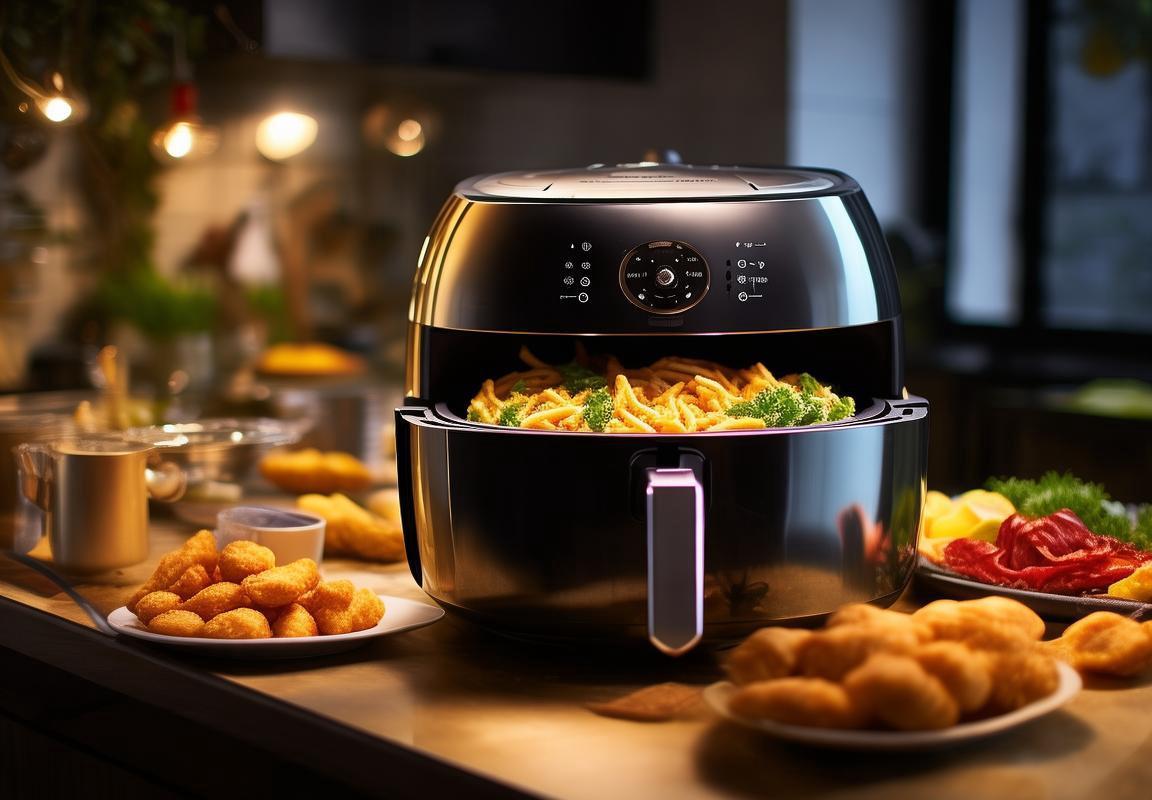
Understanding OEM (Original Equipment Manufacturer) Production
In the ever-evolving landscape of consumer electronics, the term “OEM” has become a cornerstone in the manufacturing industry. OEM, which stands for Original Equipment Manufacturer, refers to a company that produces goods or components that are then sold to another company for integration into their own products. This collaborative approach has become increasingly popular, especially in the realm of air fryers, where innovation and quality are paramount.
The concept of OEM production is rooted in the understanding that not every company has the capability to design and manufacture every component of a product in-house. By outsourcing certain aspects of production, companies can focus on their core competencies while still offering a complete, high-quality product to their customers. This is particularly evident in the air fryer market, where the integration of various components is crucial for the appliance’s performance and safety.
One of the key benefits of OEM production is the ability to leverage specialized expertise. OEM manufacturers often have a deep understanding of specific technologies or materials, which they can apply to create components that are not only functional but also efficient and durable. For instance, an OEM manufacturer specializing in heating elements might produce a more advanced and energy-efficient heating core for an air fryer, enhancing the overall performance of the appliance.
In the context of air fryers, OEM production allows for a seamless integration of different components, such as the fryer basket, heating element, and control panel. This integration is vital for ensuring that the final product is not only user-friendly but also meets the stringent safety and quality standards expected by consumers. For example, a well-known appliance brand might collaborate with an OEM manufacturer to produce a unique, user-friendly interface for their air fryer, while the OEM takes care of the internal components.
Another significant aspect of OEM production is the scalability it offers. Companies can quickly adjust their production volume based on market demand without the need to invest in additional manufacturing capabilities. This flexibility is particularly valuable in the air fryer market, where trends can shift rapidly. An OEM manufacturer can produce a high volume of air fryers in a short period, ensuring that retailers can meet consumer demand without overstocking.
Quality control is also a cornerstone of OEM production. Since OEM manufacturers often specialize in specific components or technologies, they are able to maintain a high level of quality throughout the production process. This focus on quality is crucial in the air fryer industry, where safety is a top concern. For instance, the heating elements in an air fryer must be precisely controlled to prevent overheating and potential fires, a challenge that an experienced OEM manufacturer can address with precision.
Moreover, OEM production allows for cost savings through economies of scale. By producing components in large quantities, OEM manufacturers can often negotiate better prices for raw materials and production processes. These savings can then be passed on to the end consumer, making the final product more affordable without compromising on quality.
Innovation is another driving force behind the adoption of OEM production. By partnering with specialized manufacturers, companies can explore new technologies and materials that might not be feasible in-house. This collaboration can lead to the development of cutting-edge air fryers that feature advanced features, such as smart temperature control or programmable cooking modes, enhancing the user experience.
Furthermore, OEM production fosters a competitive advantage in the market. Companies that can offer a wider range of products or superior quality due to their OEM partnerships are better positioned to capture market share. This is particularly true in the air fryer market, where differentiation can be the key to success.
In conclusion, the OEM production model has become an integral part of the air fryer industry, providing companies with the flexibility, quality control, cost savings, and innovation they need to thrive. By focusing on their core competencies and leveraging the expertise of specialized OEM manufacturers, companies can deliver high-quality, innovative air fryers that meet the demands of today’s consumers.
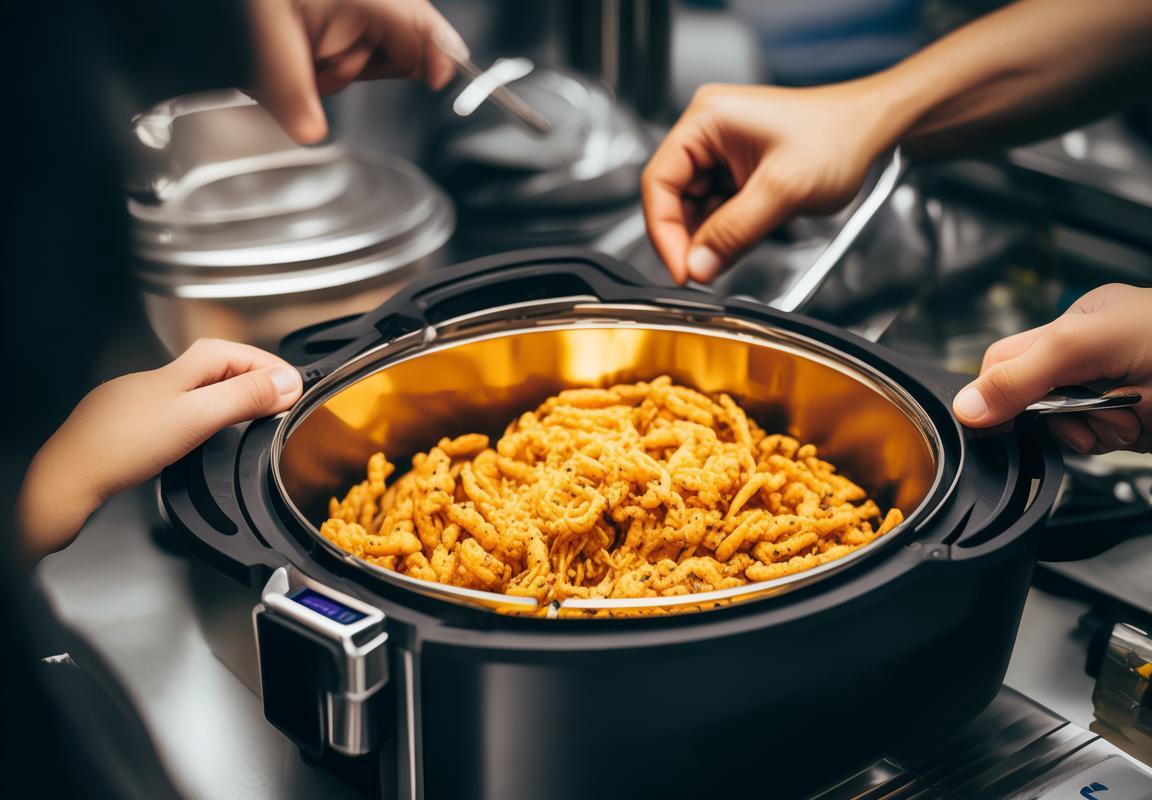
Why Turnkey Air Fryers with UL Certification are a Game-Changer
In recent years, the demand for air fryers has surged, and with it, the importance of Original Equipment Manufacturers (OEM) production has become increasingly evident. The combination of turnkey air fryers with UL certification represents a significant shift in the appliance industry. Let’s delve into why this fusion is a game-changer.
Air fryers have emerged as a preferred kitchen gadget due to their ability to offer a healthier alternative to traditional frying methods. They use hot air to circulate around food, reducing the amount of oil needed and thereby cutting down on calories and fat. This health-conscious appeal has made air fryers a staple in many households.
The rise in popularity has led to a surge in demand for these appliances, and OEM production plays a crucial role in meeting this demand. OEMs are manufacturers that produce goods for other companies, often under their brand names. They specialize in designing, engineering, and manufacturing products that are then sold by retailers or directly to consumers.
One of the primary reasons turnkey air fryers with UL certification are a game-changer is the assurance they provide. UL (Underwriters Laboratories) is a global independent safety science company that certifies products for safety. When an air fryer carries the UL certification mark, it signifies that the product has undergone rigorous testing to meet safety standards, giving consumers peace of mind.
Turnkey solutions offered by OEMs mean that companies can obtain a complete product, ready for market, without the need for extensive in-house development. This not only saves time but also reduces costs associated with research and development. For companies looking to enter the air fryer market quickly and efficiently, turnkey solutions are a compelling option.
The turnkey approach also allows for scalability. As demand fluctuates, OEMs can adjust production to meet market needs without the complexities of managing a large-scale manufacturing operation in-house. This flexibility is crucial in a fast-paced industry where trends can change rapidly.
Another key advantage is the consistency of quality. OEMs are experts in their field and can ensure that every unit produced meets the same high standards. This consistency is essential for building a strong brand reputation and customer loyalty.
Moreover, turnkey air fryers with UL certification often come with a range of features that are tailored to the latest consumer preferences. OEMs stay on top of market trends and incorporate innovations into their products, ensuring that they remain competitive.
From a regulatory standpoint, UL certification is a significant advantage. It not only ensures compliance with safety standards but also opens up opportunities in markets that require rigorous product testing and certification. This can be a major selling point for companies looking to expand their global reach.
In terms of design, turnkey air fryers offer a level of innovation that might not be achievable by companies without the resources or expertise of an OEM. The ability to customize the design to specific market needs or brand identities is a powerful tool for differentiation.
Furthermore, the environmental benefits of turnkey air fryers with UL certification cannot be overstated. With health and sustainability becoming more important to consumers, these products align with their values. OEMs are often at the forefront of adopting eco-friendly practices in their production processes, making the end product more appealing to environmentally conscious buyers.
Lastly, the cost-effectiveness of turnkey air fryers is a compelling reason for their game-changing status. By outsourcing manufacturing to an OEM, companies can avoid the high capital investment required for setting up and maintaining a production line. This cost savings can be passed on to consumers, making the product more accessible.
In conclusion, the combination of turnkey air fryers with UL certification and OEM production has revolutionized the appliance industry. It offers a comprehensive, cost-effective, and high-quality solution that addresses the needs of both manufacturers and consumers. As the market for air fryers continues to grow, this approach is set to become the norm, driving innovation and safety in the industry.

Key Benefits of Turnkey Air Fryer OEM Solutions
In the competitive landscape of kitchen appliances, the emergence of turnkey air fryer OEM solutions has brought about a transformative shift. These solutions offer a comprehensive package that includes design, manufacturing, quality control, and certification, all under one roof. Let’s delve into the key benefits that make turnkey air fryer OEM solutions a game-changer in the industry.
Manufacturers seeking to enter the air fryer market or enhance their existing product lines benefit from the streamlined process that turnkey solutions provide. Here are the key advantages:
-
Comprehensive Support: Turnkey air fryer OEM solutions offer end-to-end support, from the initial design phase to the final product. This means that manufacturers can focus on their core competencies without worrying about the complexities of the manufacturing process.
-
Customization and Flexibility: The ability to customize air fryers to meet specific market demands is a significant advantage. Turnkey OEM solutions allow manufacturers to tailor their products with unique features, branding, and design elements, which can be crucial in differentiating their offerings from competitors.
-
Quality Assurance: Quality control is paramount in the appliance industry. With turnkey solutions, manufacturers can ensure that their air fryers meet stringent quality standards. These solutions often include rigorous testing and compliance with international safety standards, such as the Underwriters Laboratories (UL) certification.
-
Cost-Effectiveness: One of the most attractive aspects of turnkey air fryer OEM solutions is the potential for cost savings. By consolidating all manufacturing processes under one provider, manufacturers can reduce overhead costs and negotiate better pricing on components and materials.
-
Rapid Time-to-Market: In today’s fast-paced market, speed is of the essence. Turnkey solutions can significantly shorten the time-to-market for new air fryer products. This allows manufacturers to capitalize on market trends and consumer demands more quickly than if they were to develop and produce their products in-house.
-
Expertise in Design and Engineering: Turnkey OEM providers often have a wealth of experience in designing and engineering efficient, user-friendly air fryers. This expertise can be invaluable in creating innovative products that not only perform well but also appeal to consumers.
-
Sustainability and Eco-Friendly Options: As awareness of environmental issues grows, consumers are increasingly looking for eco-friendly products. Turnkey air fryer OEM solutions can incorporate sustainable materials and energy-efficient designs, which can be a major selling point for brands looking to position themselves as environmentally responsible.
-
Global Reach and Distribution: Turnkey OEM providers often have established networks and relationships with global distributors and retailers. This can be a significant advantage for manufacturers looking to expand their market presence internationally.
-
Ongoing Support and Maintenance: Once the air fryers are in the market, turnkey solutions may also offer post-production support, including maintenance and repair services. This ensures that the manufacturer maintains a positive brand image and customer satisfaction.
-
Regulatory Compliance: Compliance with various regulations and certifications is a complex task. Turnkey air fryer OEM solutions often handle the compliance aspect, ensuring that the products meet all necessary legal requirements, which can be a significant burden lifted from the manufacturer’s shoulders.
The benefits of turnkey air fryer OEM solutions are multifaceted, addressing both the operational and strategic needs of manufacturers. From customization and quality assurance to cost savings and global distribution, these solutions offer a comprehensive package that can help businesses thrive in a highly competitive market. By leveraging these advantages, manufacturers can focus on innovation and growth, ultimately leading to more successful and sustainable products in the air fryer category.
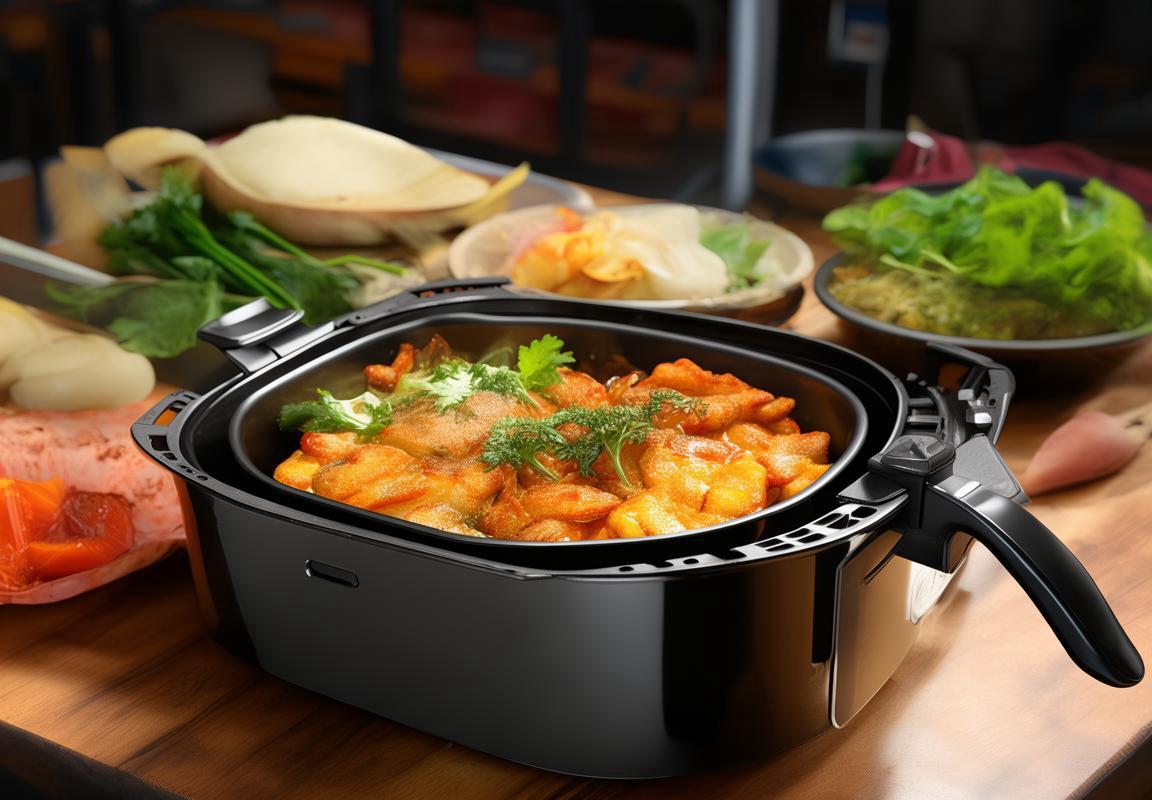
The Process of Obtaining UL Certification for Air Fryers
Understanding the process of obtaining UL certification for air fryers is crucial for manufacturers looking to ensure safety and compliance with industry standards. This certification is not just a badge of quality; it’s a testament to the air fryer’s adherence to rigorous safety protocols. Let’s delve into the intricate steps involved.
The certification process typically begins with a comprehensive review of the air fryer’s design, materials, and manufacturing processes. Engineers and quality assurance teams must ensure that every component and assembly meets the stringent safety criteria set by UL, a globally recognized safety science company.
-
Initial Evaluation and Risk AssessmentEngineers perform a thorough risk assessment to identify potential hazards associated with the air fryer’s operation. This includes evaluating the heating element, electrical components, and potential fire risks. The aim is to predict and mitigate any possible dangers before the product reaches the market.
-
Design ReviewUL certification requires that the air fryer’s design complies with its safety standards. This includes examining the product’s electrical and thermal properties, as well as its structure and materials. Designers must demonstrate that the air fryer can withstand normal use conditions without posing a risk to consumers.
-
Component TestingEach component of the air fryer, from the heating element to the outer casing, must be tested individually. These tests ensure that each part functions correctly and meets safety requirements. For instance, the heating element is subjected to extreme temperatures to ensure it can maintain a stable heat output without posing a fire hazard.
-
Electrical and Thermal TestsThe electrical systems of air fryers are crucial, and they must pass strict electrical safety tests. This includes checking for proper insulation, adequate grounding, and resistance to overheating. Thermal tests are also conducted to ensure the air fryer operates within safe temperature ranges.
-
Fire Safety TestingOne of the most critical aspects of the certification process is fire safety. Air fryers are tested for their ability to prevent fires and extinguish them if they do occur. This involves simulating various fire scenarios and assessing the response of the air fryer’s safety features.
-
Material Safety TestingThe materials used in the air fryer must be safe and non-toxic. Testing for material safety involves checking for the presence of hazardous chemicals and substances that could leach into the food or pose health risks when the product is used.
-
User Interface and Accessibility TestingThe user interface must be clear and intuitive, and all controls must be accessible and functional. Testing ensures that consumers can safely operate the air fryer without confusion or risk of injury.
-
Compliance with International StandardsIn addition to UL standards, air fryers may also need to comply with other international safety standards, such as those from the European Union (CE marking) or Canada (CSA certification). This requires additional testing and documentation.
-
Continuous Monitoring and RecertificationOnce the initial certification is obtained, manufacturers must continue to monitor their production process and products to ensure ongoing compliance with safety standards. Recertification may be required periodically to maintain certification status.
-
Documentation and ReportingThroughout the certification process, extensive documentation is created and maintained. This includes test reports, design specifications, and manufacturing process details. The documentation must be clear and comprehensive, providing a full picture of the air fryer’s safety and compliance.
Obtaining UL certification for air fryers is a meticulous and time-consuming process. However, it is an essential step for manufacturers aiming to produce a safe, reliable, and high-quality product that consumers can trust. The process not only ensures safety but also enhances the brand’s reputation, as consumers are more likely to purchase products that meet these stringent standards.
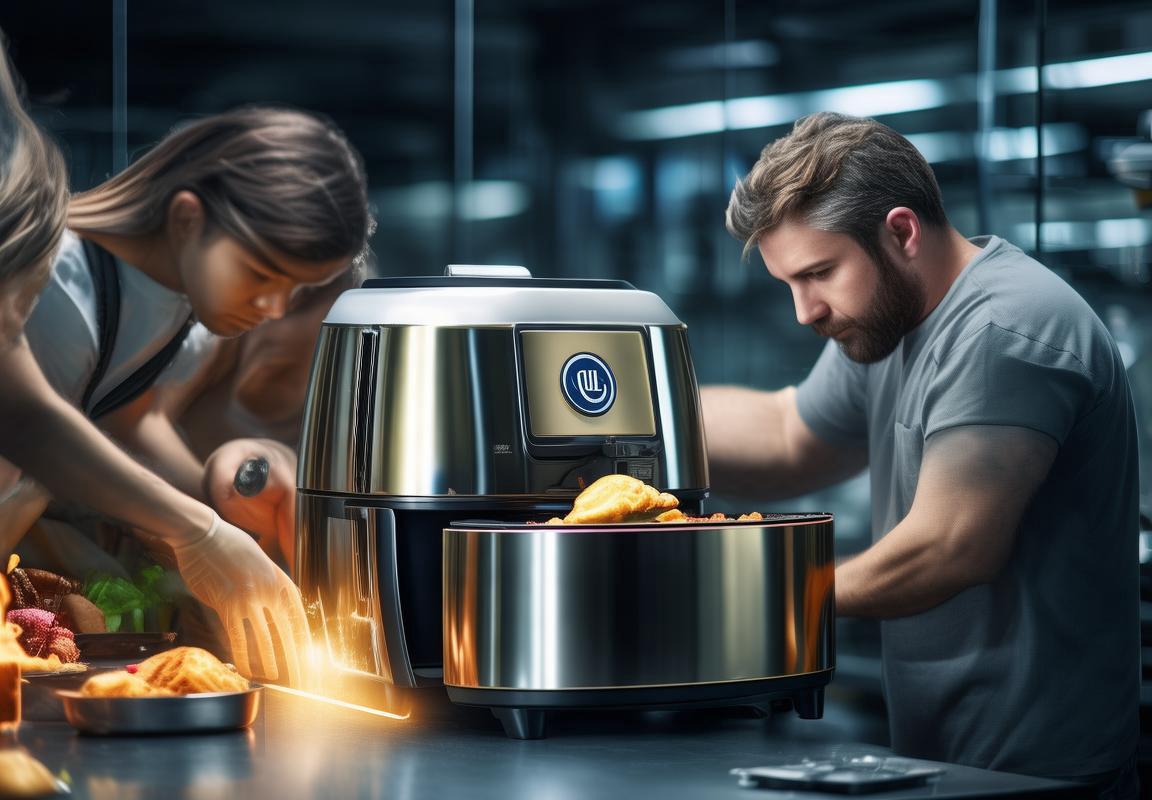
Case Study: A Success Story with Turnkey UL-Certified Air Fryer OEM
In the bustling world of kitchen appliances, a story emerged that would define the path for many manufacturers. It’s the tale of a company that revolutionized the air fryer market by embracing a turnkey solution with UL certification. Let’s delve into this success story that showcases the potential of OEM production for air fryers.
This company, known for its innovative products, recognized the growing demand for healthier cooking options. Air fryers had been gaining traction, but the market was flooded with brands that lacked consistency and safety standards. The decision was clear: to create a product that not only met customer expectations but also set a new benchmark for quality and safety.
The development process began with extensive market research, understanding the needs and desires of consumers. The team identified key features that would make their air fryer stand out, including even heating, easy-to-use controls, and a sleek design. With a clear vision in place, the company turned to an OEM partner to bring their vision to life.
The OEM partner was selected for their expertise in air fryer manufacturing, their ability to adapt to custom designs, and their track record of delivering high-quality products. The collaboration was crucial, as the OEM would be responsible for not just the manufacturing but also the UL certification process.
The certification process was meticulous. It involved a series of tests to ensure the air fryer met the strict safety standards set by UL (Underwriters Laboratories). These tests included electrical safety, fire safety, and thermal efficiency. Each component was scrutinized, from the heating element to the wiring, to guarantee compliance.
One of the most challenging aspects was the thermal efficiency test, which evaluates how well the air fryer maintains a consistent temperature. This is crucial for both even cooking and safety. The team worked tirelessly to optimize the design, making adjustments to ensure the air fryer could maintain temperatures within a narrow range, regardless of the cooking load.
Once the product passed all the initial tests, it was submitted to a rigorous review process by UL. This involved a thorough examination of the design, manufacturing process, and quality control measures. The company’s commitment to safety and quality was evident in their meticulous approach to every detail.
The partnership with the OEM was instrumental in navigating the certification process. The OEM’s knowledge of UL standards and their experience with similar products meant they could anticipate potential issues and address them proactively. This collaboration also ensured that the manufacturing process was efficient and cost-effective.
As the air fryer approached the final stages of certification, the excitement within the company was palpable. The team had worked long hours, facing setbacks and challenges, but the end result was a testament to their dedication. The final certification was not just a validation of their product but also of their commitment to safety and innovation.
The launch of the turnkey UL-certified air fryer was met with overwhelming success. Consumers appreciated the product’s quality and safety, and the company’s brand reputation soared. The success story spread quickly, attracting attention from industry experts and consumers alike.
The journey from concept to market was not without its hurdles. There were moments of doubt and frustration, but the company’s unwavering focus on safety and quality paid off. The OEM partnership played a pivotal role in ensuring that the product not only met but exceeded expectations.
This success story with the turnkey UL-certified air fryer OEM is a shining example of what can be achieved through collaboration, innovation, and a steadfast commitment to safety. It’s a story that continues to inspire other manufacturers to strive for excellence in their own products, knowing that the right partnerships and processes can lead to groundbreaking results.
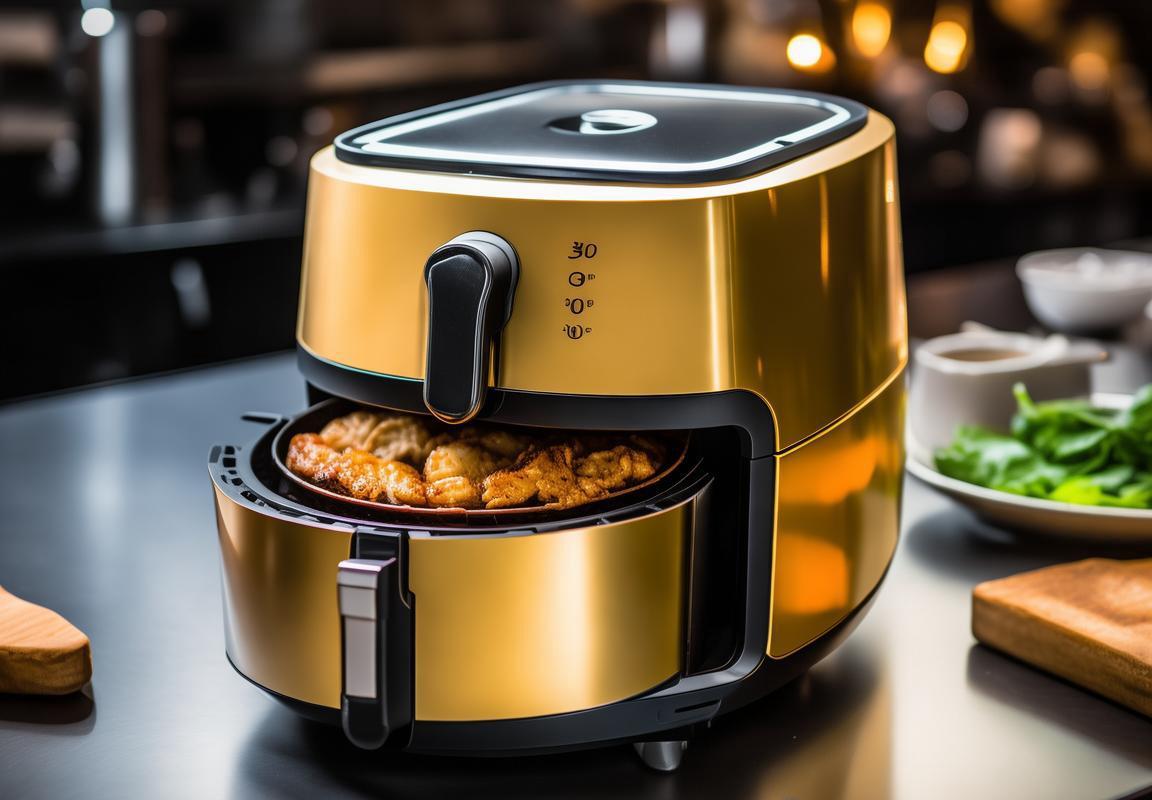
Conclusion: The Future of Efficient and Safe Air Fryer Manufacturing
In the evolving landscape of kitchen appliances, the advent of turnkey UL-certified air fryer OEM solutions has marked a significant shift in how these devices are produced and consumed. Let’s delve into the future of efficient and safe air fryer manufacturing.
The air fryer market has seen explosive growth, driven by health-conscious consumers seeking a healthier alternative to traditional frying methods. As this market expands, the need for reliable and compliant products has become paramount. Turnkey solutions offer a streamlined approach to bringing these products to market, ensuring quality and safety at every stage.
Efficiency is at the heart of turnkey air fryer OEM solutions. By integrating design, manufacturing, and quality assurance under one roof, OEMs can eliminate the inefficiencies that often come with working with multiple suppliers. This cohesive process allows for quicker product development, reduced lead times, and a more cost-effective production cycle.
Safety, however, is non-negotiable in the appliance industry. The UL certification process is rigorous and comprehensive, ensuring that air fryers meet stringent safety standards. This certification is not just a checkbox; it’s a promise to consumers that the product they’re purchasing has been thoroughly tested and deemed safe to use.
The future of air fryer manufacturing lies in innovation and sustainability. As technology advances, we can expect to see air fryers that are not only safer and more efficient but also more environmentally friendly. This includes the use of recycled materials, energy-efficient components, and designs that minimize waste.
Consumers are increasingly seeking appliances that not only perform well but also align with their values. Turnkey solutions that offer UL certification cater to this demand by providing a product that is not only effective but also meets the highest safety and quality standards.
As the industry continues to grow, collaboration between OEMs and certification bodies will be crucial. This partnership ensures that the latest safety protocols are incorporated into the design and manufacturing process, keeping the market ahead of potential hazards.
The rise of smart appliances is another trend that will shape the future of air fryer manufacturing. With the integration of IoT (Internet of Things) technology, air fryers can offer personalized cooking experiences, energy-saving modes, and even remote monitoring. These advancements will not only enhance user convenience but also contribute to the efficiency and safety of the appliance.
Moreover, the future of air fryer manufacturing will focus on accessibility. As these appliances become more prevalent, there’s a growing need to make them available to a wider audience, including those with disabilities. This means designing air fryers that are easy to use, maintain, and understand, regardless of the user’s physical abilities.
Another critical aspect is the lifecycle of the product. Manufacturers will need to consider not just the production process but also the end of life. This includes designing air fryers that are easily recyclable or repairable, reducing the environmental impact over the product’s lifetime.
In conclusion, the future of efficient and safe air fryer manufacturing is bright. It’s a future where innovation meets sustainability, where safety is paramount, and where technology enhances the lives of consumers. Turnkey UL-certified air fryer OEM solutions are at the forefront of this transformation, setting the stage for a new era of kitchen appliances that are both reliable and responsible.